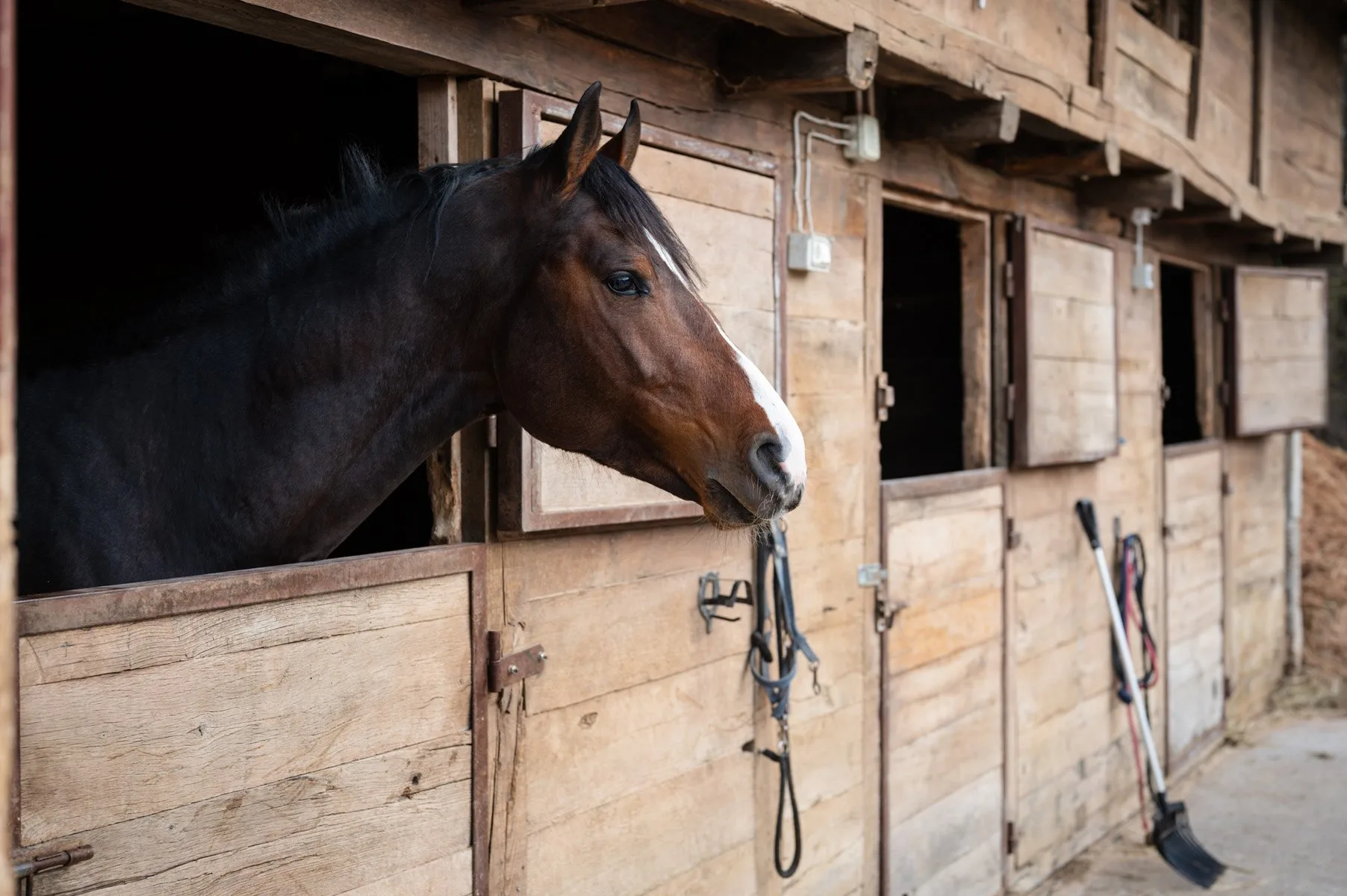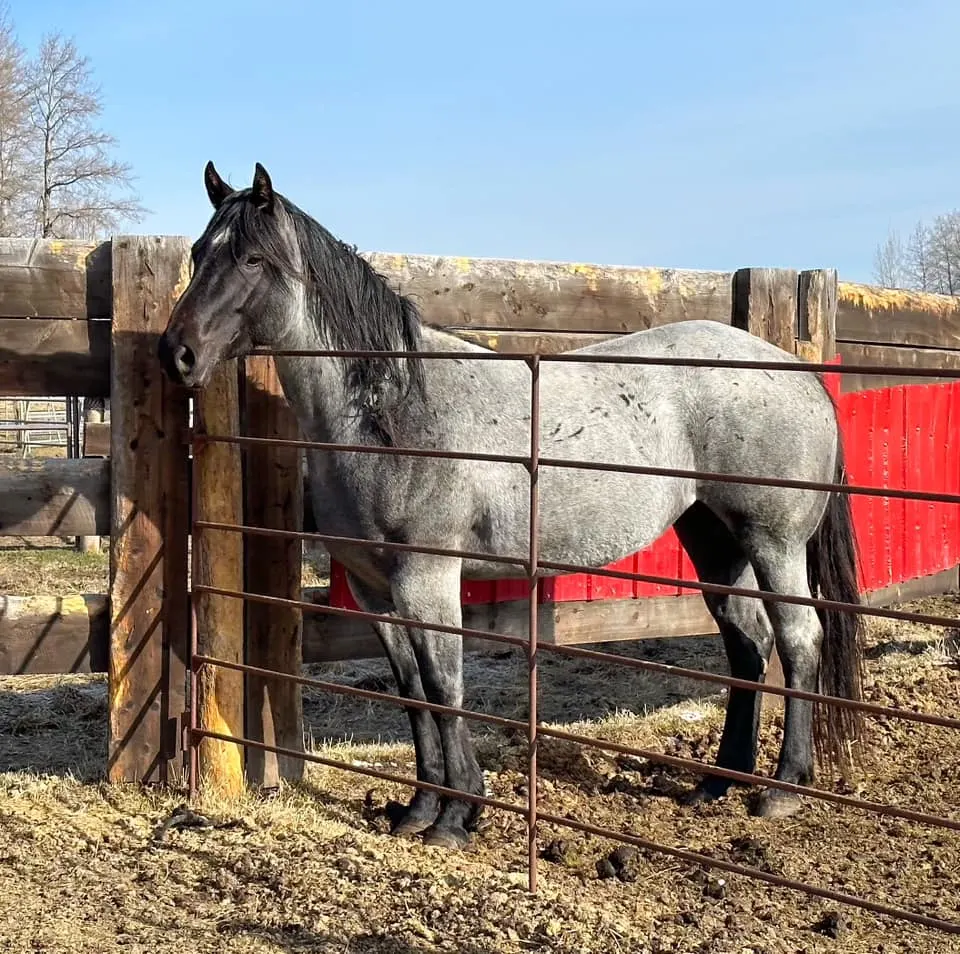A horse can stay in a stall for about 24 hours at a time, but it’s not ideal. In this article, you’ll learn:
- How long horses can stall in stalls without getting out and what happens if they don’t
- Why horse health and mental health requires plenty of time outside of stalls
- Plus 2 exceptions to the rule: times when it’s ok to keep a horse in a stall for a day or more.
Too much time in a stall is difficult for horses, here’s why:
Horses can live in stalls 24 hours a day but probably shouldn’t. It’s best to get your horse at least 12 hours of outdoor grazing each day. If that is not possible, be sure that your horse is ridden or exercised every day. Even a half-hour in a round pen can help manage some of the health and psychological wellbeing issues that show up when horses spend too much time in a stall.
What Happens if you Leave a Horse in a Stall Too Long
When a horse is confined to a stall for too long, it can lead to a number of problems. The horse may become overweight and develop serious health problems (source). It may also develop bad habits such as cribbing or weaving (source). In addition, the horse may become restless and destructive, and may even injure itself.
12+ hours – Confining a horse to a stall for more than 12 hours likely won’t cause issues- especially if the horse has hay to munch on and a horse in the stall next door to keep them company. Many horses spend their life on a 12-hour stall / 12-hour pasture schedule and thrive.
18+ hours – Leaving a horse in a stall for 18 hours occasionally probably won’t cause issues. You may notice a little more energy the next time you saddle up (due to the missing outlet for energy) but horses occasionally stalled for 18 hours are unlikely to have health problems. However, horses should not spend 18 hours a day in a stall on a long-term basis, as this begins to risk health and psychological problems.
24+ hours – There are a few reasons why keeping a horse in a stall constantly is a bad thing. First, it can lead to the horse becoming bored and restless and developing vices like cribbing. Second, it can make the horse less healthy, both physically and mentally. Finally, it can make even the most docile horse a nightmare to handle and train- 24 hours in a stall + a high energy feed is a recipe for a hot horse.
Stall rest is sometimes necessary (see below), but it is important to make sure that the horse has plenty of attention and enrichment. Otherwise, the horse may become bored, anxious, and unhealthy.
While some people believe that horses ridden daily can live in a stall all the time (a standard practice at elite horse training farms), I believe that this is not the best option for the horse. Horses are social animals and need interaction with other horses or with their human handlers. Stalls can provide a horse with a place to rest and eat, but they should not be the only place a horse lives. Horses need to be able to move around and stretch their muscles. They also need to be able to socialize with other horses. Stalls can be a part of a horse’s life, but they should not be the only place a horse lives.
Hint: Communal stalls can be a healthy alternative to traditional horse barns.
horses need exercise
Horses are creatures designed for movement. Their bodies are adapted to a life of constant motion- cardiac health literally depends on contracting tendons helping to move blood back into their core!
There are a number of reasons why horses need to move. First, movement helps to keep their muscles and joints healthy. When horses are stationary, their muscles can start to atrophy, and their joints can become stiff and painful- especially senior horses. Movement helps to keep the muscles and joints supple and healthy.
Second, movement helps to keep the horse’s circulatory system functioning properly. When horses can’t move, their circulatory system can start to slow down, and this can lead to swelling or “stocking up”, navicular disease, or thrush (source). Movement helps to keep horses healthy.
Third, movement helps to stimulate the horse’s digestive system. The horse’s digestive system is designed to work best when the horse is in motion. Even the small movements of grazing help keep the digestive system working. When horses are stationary, their digestive system can start to slow down, which increases their risk for colic.

The importance of regular activity
If you have to leave your horse in a stall for most of the day, you will need to ride more regularly. Your ride may be your horse’s only physical activity- so it becomes important to ride every day. Riding provides an outlet for the horse to move and use up energy, while also getting fresh air.
Pasture turnout is another great way to provide exercise for horses. This type of exercise allows the horse to move freely and explore its surroundings, while also getting the opportunity to graze on fresh grass.
In arid or desert environments, grazing may not be available. Even in these cases, it’s important to make sure horses spend time in an enclosed area where they are free to move around.
Exceptions: When Horses can Stay in a Stall Longer than 24 Hours
Like most rules, this one has exceptions. There are times when keeping a horse in a stall for days may be the better option between two bad choices. These situations include:
- Horses on Stall Rest – Stall rest is like “bed rest” for horses. Veterinarians sometimes put horses on stall rest when they are recovering from a serious injury or an injury. Since horses can’t be put on crutches or a wheelchair to recover, vets limit their movement through stall rest. Horses on stall rest are usually confined to a stall 24 hours a day and may be medicated to prevent the negative effects of being left too long in a stall. Read tips on how to manage stall rest boredom here.
- Severe winter weather – Horses almost never freeze to death and generally thrive in cold weather. Still, there are weather patterns (like rain turning to freezing rain) that horses should be sheltered from. Even in these situations, a shelter open to pasture is better than a stall, since horses can move their bodies but seek shelter as needed.

Conclusion
Horses can live in stalls 24 hours a day but probably shouldn’t. You should try to get your horse at least 12 hours of grazing each day. If that is not possible, be sure that your horse is ridden or exercised every day.
References:
Antonia J. Z. Henderson (2007) Don’t Fence Me In: Managing Psychological Well Being for Elite Performance Horses, Journal of Applied Animal Welfare Science, 10:4, 309-329, DOI: 10.1080/10888700701555576
Thomas, H. S. (2004). Care & Management of Horses. United States: Eclipse Press.
